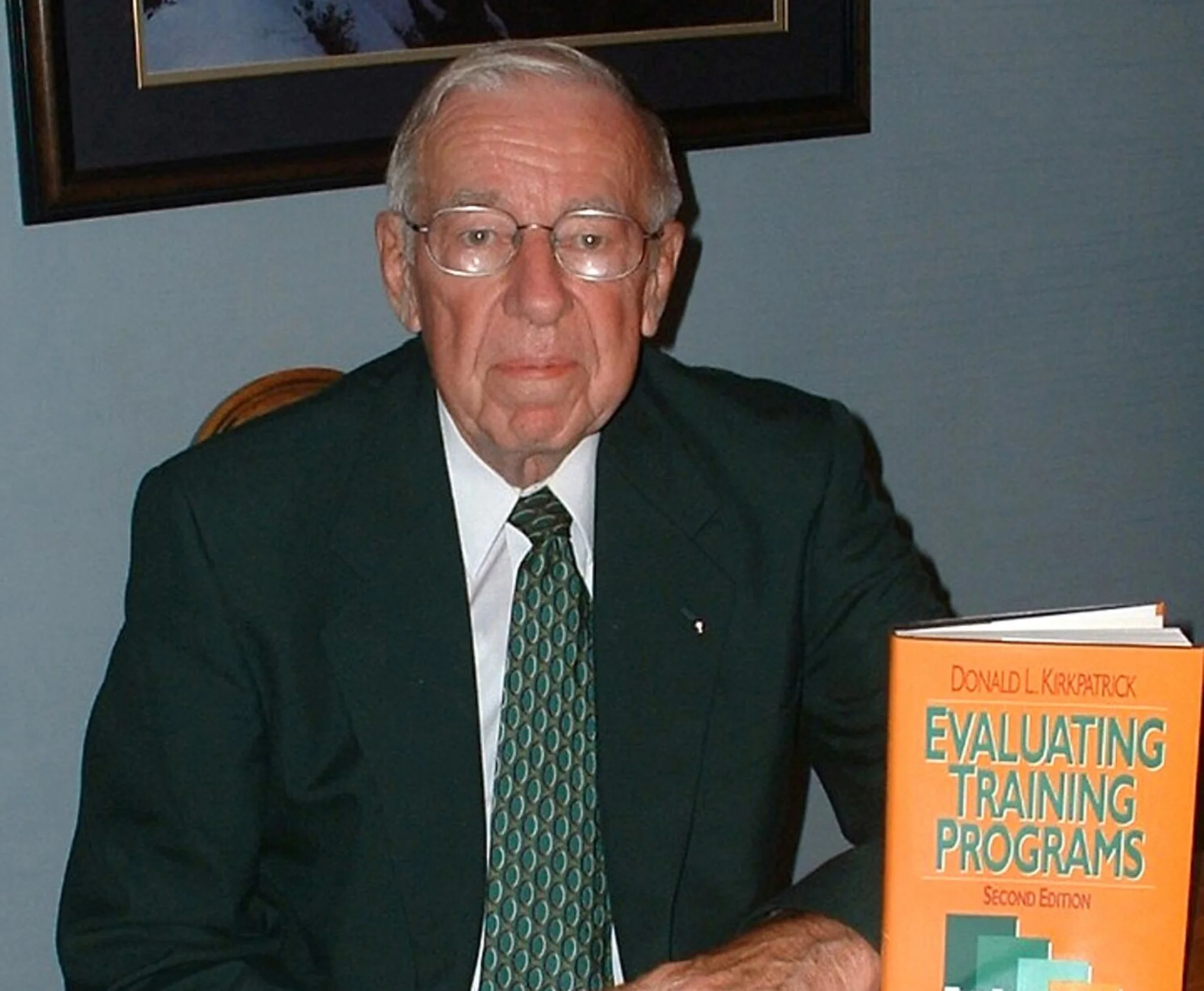Get full access to our FREE Resourses Register Now
At Kirkpatrick Partners, our core values drive everything we do. We believe in inclusion, providing a ‘Wow Experience,’ striving for excellence, fostering innovation, upholding integrity, and prioritizing our mission above all else.

At Kirkpatrick Partners, we transform learning and performance professionals into strategic partners by guiding them in how to get the most out of their talent investments. We believe that, when equipped with the right knowledge and skills, we can empower people to make more meaningful contributions to their organizations.



The Kirkpatrick Model is the standard for leveraging and validating talent investments.
The four levels of evaluation — Reaction, Learning, Behavior, and Results — form the time – tested and most trusted method of designing, implementing, and evaluating training that produces bottom-line value and organizational mission accomplishment.

Dr. Don Kirkpatrick was Professor Emeritus at the University of Wisconsin and Honorary Chairman of Kirkpatrick Partners until his passing in May 2014.
An innovator and visionary thinker, Don created and developed The Kirkpatrick Model, the most recognized and widely-used training evaluation model in the world. He established the Four Levels of Evaluation framework in the 1950s, around the time he completed his Ph.D. dissertation, Evaluating a Human Relations Training Program for Supervisors.

Your Ultimate Companion for Efficient and Effective Evaluation
Whether you’re just starting out, leading a lean learning team, or on a tight budget, this toolkit is crafted to empower your journey in program evaluation.
Unveil a world of knowledge, techniques, and customizable tools to transform your evaluation process.
“The Kirkpatrick principles are essential to maximizing the transfer of learning to behavior and subsequent organizational results as well as to demonstrate the value of training to the organization; unquestionably critical for any world-class institution!”
Whether you are new to the training industry or a seasoned veteran, get access to the newest Kirkpatrick free resources and stay current on the latest trends in training evaluation and business partnership.